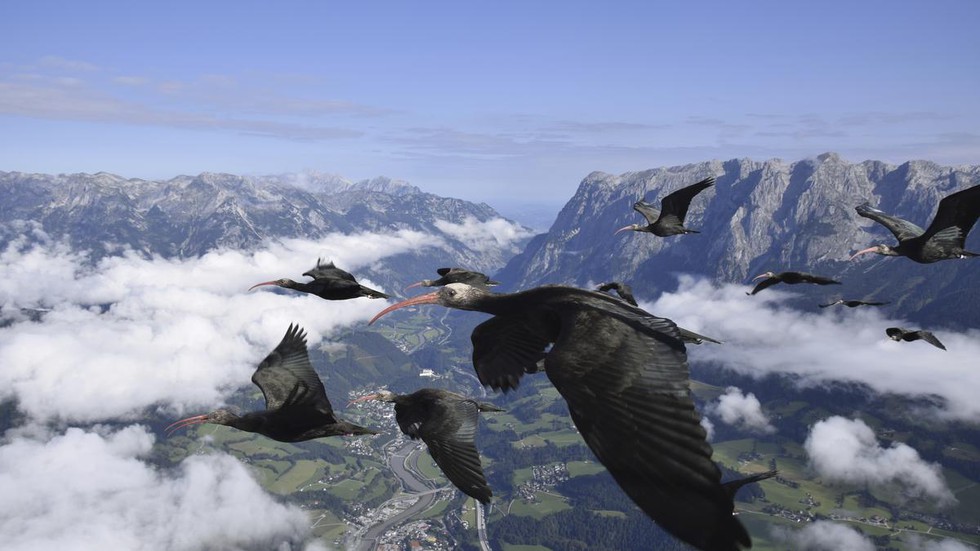About Northern Bald Ibis:
- Scientific Name: Geronticus eremita
- Conservation status: Endangered (formerly Critically Endangered)
- Historical range: Once native to Central Europe until the 17th century, also found in North Africa and the Arabian Peninsula.
- Extinction in Europe: The species became extinct in Central Europe by the 17th century due to excessive hunting.
- Distinctive features: The Northern Bald Ibis is known for its black plumage with an iridescent green sheen, a bald red head adorned with black markings, and a long, downward-curved beak.
- Their red beak and legs stand out against their dark feathers. There is no sexual dimorphism in this species.
- Diet: They primarily feed on insect larvae, earthworms and other invertebrates, using their long, slender beak to probe the ground, guided by their sense of touch.
- Habitat: These ibises prefer open areas with short grass, such as meadows, pastures, or even sports fields like golf courses. Despite their bald head resembling that of a vulture, they are not scavengers.
- Social behaviour: Northern Bald Ibises are social birds, historically forming large colonies with thousands of individuals.
- They engage in a ritual greeting involving crest-spreading and bowing, which often triggers a similar response throughout the colony.
- Monogamy: Typically, seasonally monogamous, breeding partnerships often change yearly, though some pairs may stay together for multiple years.
- Breeding habits: They choose steep rock faces with protective nooks for nesting, laying up to four greenish eggs. Incubation begins with the first egg, leading to staggered hatching times.
Nestling development: Young birds fledge within 42-50 days, initially following their parents before joining juvenile groups. They learn migration routes by following experienced birds during the fall migration.
